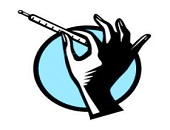“In the absence of a standardized and universally accepted method of calculating exposure to risk, are accuracy, integrity and timeliness achievable?” asked Peter Hughes, Managing Director, Financial InterGroup (UK). He was the fourth of four panellists to present at the GARP webinar on risk data aggregation held July 22, 2014.
Hughes was speaking with reference to the Basel Committee on Banking Supervision (BCBS) article 239, which spells out principles of accuracy, integrity, and timeliness for risk data.
There’s a mixed bag of methods used to identify and quantify exposure to risk, Hughes noted. Quantitative modelling, accounting methods, key risk indicators, and risk-weighted assets are just a few of the ways of expressing risk.
Hughes proposed “risk accounting” that would be associated with every transaction. Transactions are tagged “with codes that are subsequently used by financial controllers to direct financial … reporting,” he noted. “If we could tag transactions with risk codes that can be used in a standardized calculation of each transaction’s exposure to risk, would that begin to solve our risk data reconciliation and data integrity problem?”
Risk accounting would use a common unit of exposure, the “risk unit” (which should not be expressed in ordinary currency, he stressed). Risk units are “numeric values that can be aggregated across products, processes, departments, divisions and drilled into for determining causal factors.” Hughes compared them to temperature. Temperature is correlated to heat, but does not express the total quantity of heat within something (measured in calories).
Risk accounting would utilize the risk mitigation index (RMI), a number that would show, on a scale of 0 to 100, the inherent risk in certain transactions. The RMI would be derived from best practice scoring templates. It expresses “the portion of maximum potential loss that is mitigated through the effective management and control of the firm’s operating environment,” said Hughes. A low RMI would mean the probability of unexpected losses is high.
“Risk accounting is a possible solution for BCBS 239’s risk reporting requirements,” said Hughes. Work is underway to develop risk accounting processes for tasks such as capital adequacy determination and stress testing.
During the question period, Allan Grody (presentation 3) said that work began on formulating a risk accounting framework 8 years ago at JP Morgan Chase, first in connection with operational risk. ª
Click here to view the webinar. Hughes’s portion covers slides 45 to 62.
More extensive research papers are available for download from www.FIG-UK.com – click on Research.

